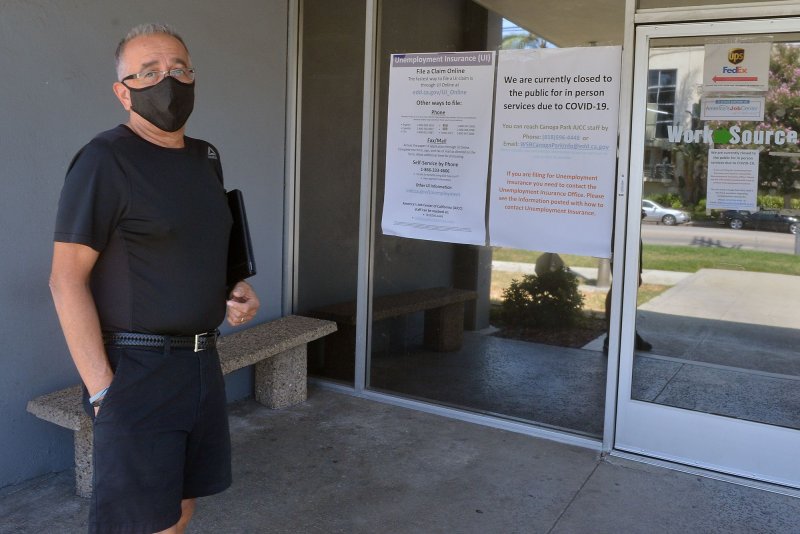2 delivery companies in Oregon reportedly stopped working for Amazon, their only client, alleging 'intolerable' conduct and unsafe working conditions
sjackson@insider.com (Sarah Jackson)

Provided by Business Insider Patrick Fallon/Getty Images
Two delivery companies reportedly cut ties with Amazon, accusing it of poor pay and work conditions.
Triton Transportation and Last Mile Delivery say Amazon changed rules and routes without notice.
They're reportedly seeking $36 million and won't resume deliveries unless their conditions are met.
Two delivery companies in Oregon made the decision to effectively shut down rather than keep delivering for Amazon, according to Vice.
Last Mile Delivery and Triton Transportation stopped working with Amazon, which is their only client, last week, The Oregonian reported.
"Amazon has been nickel and diming us so bad that if we don't make change we can no longer offer the support and incentives that thus far we have been able to provide," wrote Last Mile Delivery co-owner Tracy Bloemer in a letter to workers seen by The Oregonian. "We believe most of the routes are unsafe and require drivers to deliver in an unsafe manner."
The companies sent a letter to Amazon accusing the e-commerce giant of "intolerable, unconscionable, unsafe, and most importantly, unlawful" conduct in the past two years, according to Vice. Together, the delivery companies employ roughly 150 drivers and make more than 20,000 Amazon deliveries in the Portland area on average every day, The Oregonian reports.
The companies said Amazon nixed delivery routes and changed rules without notifying them, according to Vice. The letter, obtained by Vice says that, because drivers commit to routes ahead of time, Last Mile and Triton are still on the hook for wages even if Amazon cuts routes at the last minute due to low inventory or warehouse staffing.
In the letter, the companies also accused Amazon of accessing drivers' personal information, reducing reimbursements, firing drivers without giving the companies a say in the matter, and allocating deliveries unevenly among workers. Because deliveries weren't evenly divided, some workers ended up needing to drive faster, potentially endangering other drivers or pedestrians, and work 12-hour shifts, even though Amazon only reimburses them for 10-hour shifts, according to Vice.
Last Mile and Triton are seeking $36 million to cover company damages and pay for laid-off drivers, Vice reports. They told the news outlet they won't resume Amazon deliveries unless the company agrees to its terms regarding pay and working conditions.
"Earlier this week, two Delivery Service Partners abruptly threatened to stop servicing the Amazon account and jeopardize the livelihood of their drivers if we did not pay them $35MM within 48 hours along with a string of other demands," Amazon spokesperson Kate Kudrna told Insider in an email response on Friday. "We refused their demands and they followed through with their threat, terminating their contract with us, leaving their employees confused and looking for answers. We're doing everything we can to support the affected employees including connecting them with other Delivery Service Partners in the area who are hiring."
Amazon says it has more than 2,000 delivery service partners employing more than 115,000 delivery associates across the US. These workers earn more than $17.50 an hour on average, according to the company.
Amazon came under fire earlier this year after drivers said they had to pee in bottles because they didn't have time to use the restroom on their routes. Amazon has denied those claims. Delivery workers have also expressed frustration with surveillance cameras that Amazon said it installed in vans for workers' safety.
Working conditions for the company's warehouse workers are also under scrutiny, with one analysis finding that these Amazon workers were almost twice as likely to be injured than their counterparts at Walmart.
Last Mile Delivery, and Triton Transportation did not respond to requests for comment.
Read the original article on Business Insider
Last Mile Delivery and Triton Transportation stopped working with Amazon, which is their only client, last week, The Oregonian reported.
"Amazon has been nickel and diming us so bad that if we don't make change we can no longer offer the support and incentives that thus far we have been able to provide," wrote Last Mile Delivery co-owner Tracy Bloemer in a letter to workers seen by The Oregonian. "We believe most of the routes are unsafe and require drivers to deliver in an unsafe manner."
The companies sent a letter to Amazon accusing the e-commerce giant of "intolerable, unconscionable, unsafe, and most importantly, unlawful" conduct in the past two years, according to Vice. Together, the delivery companies employ roughly 150 drivers and make more than 20,000 Amazon deliveries in the Portland area on average every day, The Oregonian reports.
The companies said Amazon nixed delivery routes and changed rules without notifying them, according to Vice. The letter, obtained by Vice says that, because drivers commit to routes ahead of time, Last Mile and Triton are still on the hook for wages even if Amazon cuts routes at the last minute due to low inventory or warehouse staffing.
In the letter, the companies also accused Amazon of accessing drivers' personal information, reducing reimbursements, firing drivers without giving the companies a say in the matter, and allocating deliveries unevenly among workers. Because deliveries weren't evenly divided, some workers ended up needing to drive faster, potentially endangering other drivers or pedestrians, and work 12-hour shifts, even though Amazon only reimburses them for 10-hour shifts, according to Vice.
Last Mile and Triton are seeking $36 million to cover company damages and pay for laid-off drivers, Vice reports. They told the news outlet they won't resume Amazon deliveries unless the company agrees to its terms regarding pay and working conditions.
"Earlier this week, two Delivery Service Partners abruptly threatened to stop servicing the Amazon account and jeopardize the livelihood of their drivers if we did not pay them $35MM within 48 hours along with a string of other demands," Amazon spokesperson Kate Kudrna told Insider in an email response on Friday. "We refused their demands and they followed through with their threat, terminating their contract with us, leaving their employees confused and looking for answers. We're doing everything we can to support the affected employees including connecting them with other Delivery Service Partners in the area who are hiring."
Amazon says it has more than 2,000 delivery service partners employing more than 115,000 delivery associates across the US. These workers earn more than $17.50 an hour on average, according to the company.
Amazon came under fire earlier this year after drivers said they had to pee in bottles because they didn't have time to use the restroom on their routes. Amazon has denied those claims. Delivery workers have also expressed frustration with surveillance cameras that Amazon said it installed in vans for workers' safety.
Working conditions for the company's warehouse workers are also under scrutiny, with one analysis finding that these Amazon workers were almost twice as likely to be injured than their counterparts at Walmart.
Last Mile Delivery, and Triton Transportation did not respond to requests for comment.
Read the original article on Business Insider



























